This guide explains how to create an effective homepage headline for your business website. It includes best practices, SEO considerations, and multiple examples of good and not so good homepage headlines.
Introduction
Why is your homepage headline important?
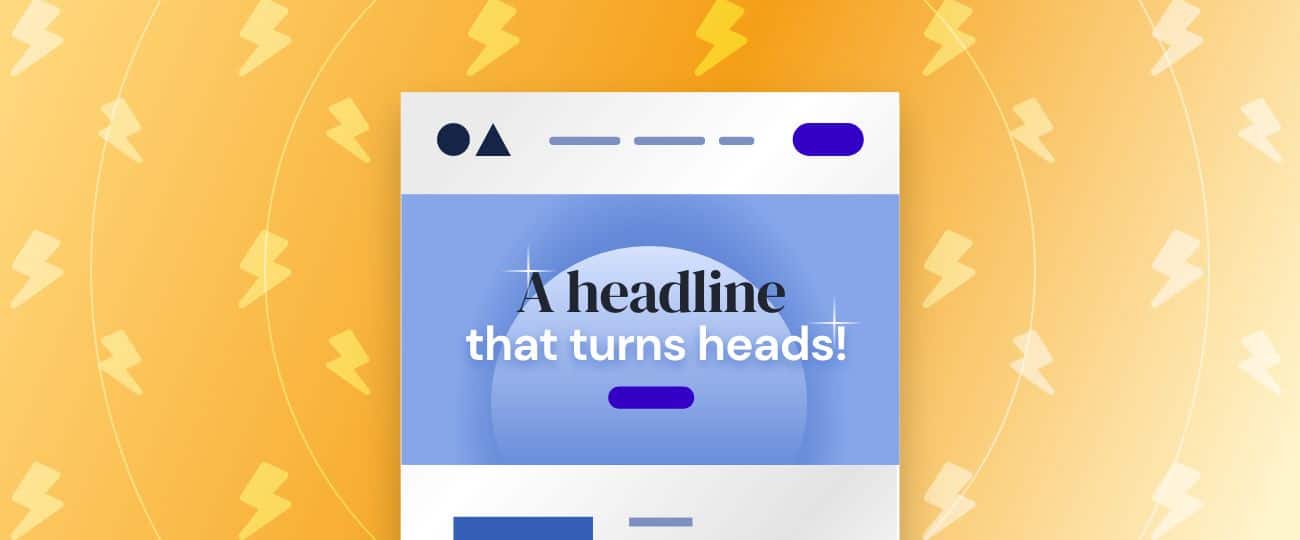
Homepages are all about inspiring people to stay on a website and explore what’s on offer. A homepage has to capture the attention of a visitor and tell them who you are and what you do. It also needs to tell them how you can provide what they’re looking for, and direct them where to go next. With short attention spans and an oversupply of options, many people are not willing to invest a lot of effort trying to figure these things out on their own. Therefore, your homepage has to make things clear at the beginning, from the top. In other words, starting with the headline.
Unfortunately, with most websites, people do not get past the first impression stage: they land on the homepage and then leave. When someone visits a page of a website and leaves without taking action or exploring other pages, it’s known as bouncing. A key objective of website optimization is to lower the bounce rate metric. Low bounce rates correlate to increased conversion rates on business websites, so it’s crucial to think about the impression your homepage makes with your visitors, and how you can keep them on your site and engaged.
Analysis of typical website user behavior reveals how important the homepage — and particularly the top of the homepage — is. Services like Google Analytics can record how far users scroll down website pages before they bounce, and this data shows that most first-time visitors to a website spend their time looking at the top section of a homepage, which is the section they see before they have to start scrolling down.
This section is called above the fold, and it contains the header: the menus across the top, a headline and other text, a banner image and/or video, and it introduces the design theme of the website. You’ve seen thousands and thousands of them, but how many captured your attention and inspired you to keep exploring the site?
Well, there’s data for that, too. It seems the 80/20 rule comes into play here and fully four out of every five homepage visitors are not scrolling down. This means 80% of visitors to most websites are only viewing the website header, then bouncing. Add this to the average attention span of 8.25 seconds and you’ll see that most people likely never go past the headline.
The sad fact is the vast majority of websites follow this trend. They have high bounce rates and low conversion rates. So let’s make sure your site isn’t one of them. In this article, we’ll focus specifically on creating a captivating, informative headline that will assure the visitor they are in the right place and inspire them to scroll down the page and click through to other pages. One last bit of data: A/B testing has proven that these kinds of effective headlines lift conversion rates by 10.4%
First, let’s clarify the anatomy of a homepage above the fold. The current term for this familiar area is the header. As mentioned above, this is the top section of the page users see before they need to scroll, and it’s your prime real estate.
Here is an example of an effective homepage header:
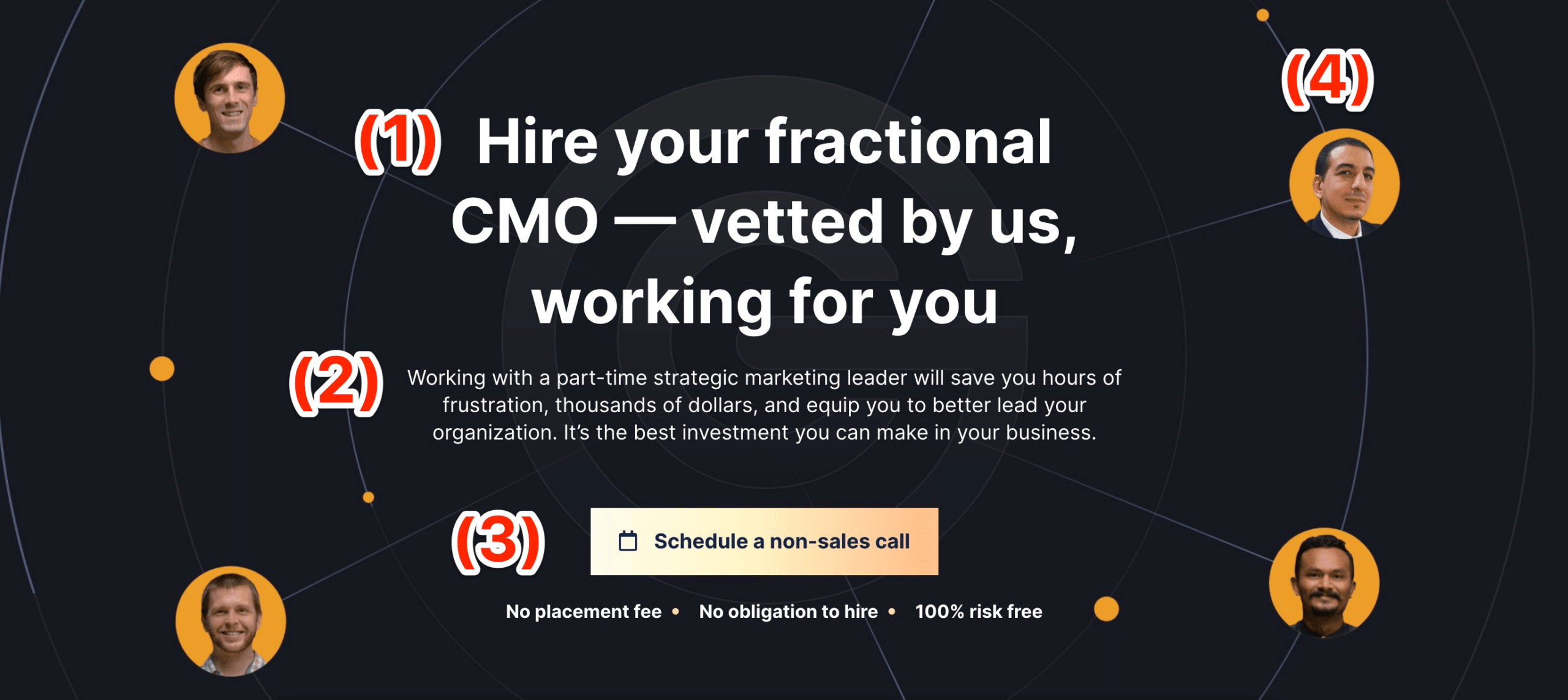
(1)homepage headline, (2) subheadline, (3) call to action, (4) supporting imagery
It’s of paramount importance that your homepage headline, subheadline, and other elements above the fold pass the “grunt test,” a term coined by Donald Miller of Storybrand. To pass this test, your customers need to be able to answer three questions in their minds within a few seconds of seeing your homepage header:
- What does this business offer?
- How will they make my life better?
- What do I need to do to buy it?
The example header above accomplishes these three goals. Being able to quickly and concisely tell a visitor what they need to know will capture their attention and make them want to spend more time on your site or take meaningful action like filling out a contact form.
Struggling to come up with a good homepage headline?
Experiment with our selection of headline and subheadline templates, curated from a variety of successful websites, to start crafting a more effective homepage headline.
So, how can I craft an attention-grabbing homepage headline?

Note: Before you start brainstorming headlines for your business homepage, you need to be clear about who you’re targeting. You have to understand your customers’ motivations, needs, and what will inspire them or prevent them from taking action. If you’re unsure how to go about this, refer to our article on defining your target audience.
Here are eight tips and best practices for creating headlines:
1. Describe what you offer in as few words as possible.
- Your headline should communicate your core service/product/offering so that readers know they’ve landed in the right place.
- Your subheadline can back up the message in the headline with context or details. Note that the subheadline does not normally contribute to SEO (search engine optimization) performance or ranking.
2. Make the core message of the headline about the reader and their outcomes, not about you.
- Elucidate the benefit to the reader of doing business with you — highlight what’s in it for them. How will their life change by engaging with your company or using your products/services? What kind of transformation can they expect? How will you be able to solve their problem?
3. Be as clear as possible.
- A headline like, Data for Building a Sustainable Long-Term Strategy is too vague. Is this a tool? Is it a service? Is it a strategy? How does it ensure sustainability? Why should a person look for this to improve their operations, and what operations are we talking about? Vague or jargon-laden headlines like this one raise more questions than answers, and that triggers skepticism, which leads to bouncing.
- Your headline and subheadline should hook and guide the reader with a message that reaches the creative, emotional, right side of the brain. Less is often more here, so don’t try to make it too clever or complicated. Here is a list of “power words” in English.
4. Develop the body copy first.
- Most professional copywriters write the headline as the last step after the page copy is finished. This ensures the headline conveys the actual vision for the product/service that’s described on the page. To replicate this, summarize everything the body copy of your homepage says and make sure your headline is consistent with this messaging.
5. Create different versions of your headline.
- Headlines are rarely perfect the way they are and seem to always benefit from tweaking. Creating different versions will help you find the best version. Try narrowing down to a few versions addressing a very specific problem or even just a single most important use case.
6. Test and test again.
- Run A/B tests on the headlines to see which is able to catch the attention of the most users. Show them to people in real time and see which can pass the “grunt test” described above.
- Use tools like this for a better understanding of the emotional aspect: Headline Analyzer – Emotional Marketing Value
7. Familiarize yourself with SEO and search ranking performance. For example, if you know there are keywords associated with your business and with what your customers are searching for, be sure to include these words in your headline. Other technical aspects of SEO regarding headlines include:
- The ideal headline length is from 6 to 12 words.
- The H1 headline coding can be applied to smaller lines of text placed above your headline. Known as an eyebrow, this is a way to have your large-text headline focus on the benefit/transformation you offer to your audience and still get the SEO benefit of having your primary service/product keyword in the headline. Examples will be shown in the following section.
8. Use strong supporting visuals and a call to action.
- Your headline will probably only take up a small portion of the homepage header real estate, leaving you space for an appealing image, video, or other graphics. Reinforce your headline and subheadline with visuals that support your message and a call to action that directs readers to take a next step. Also, avoid using stock photos.
Do I need to strictly follow these recommendations?
The short answer is that it depends. The tips above are guidelines and best practices, not rules. You’ll find many established companies who don’t adhere to these guidelines because of their high levels of brand awareness. Think, Apple, Nike, Tesla, etc. They don’t need to spell out what they do, who it’s for, or what a visitor to their website should do next because the vast majority of people already know. It’s tempting to use these major brands’ websites for inspiration, but don’t try to replicate them.
However, if you’re reading this, it’s likely that you own or work for a small to medium-sized business and don’t have the luxury of being overly creative with your messaging. Simply being clear and concise with your homepage headline messaging will put you ahead of most of your competition.
Next, let’s take a look at some homepage headline examples.
Examples of good homepage headlines (and some mistakes to avoid)
This section will outline some good and bad examples of homepage headlines and weigh them against the guidelines and best practices discussed above.
3bExam ✅
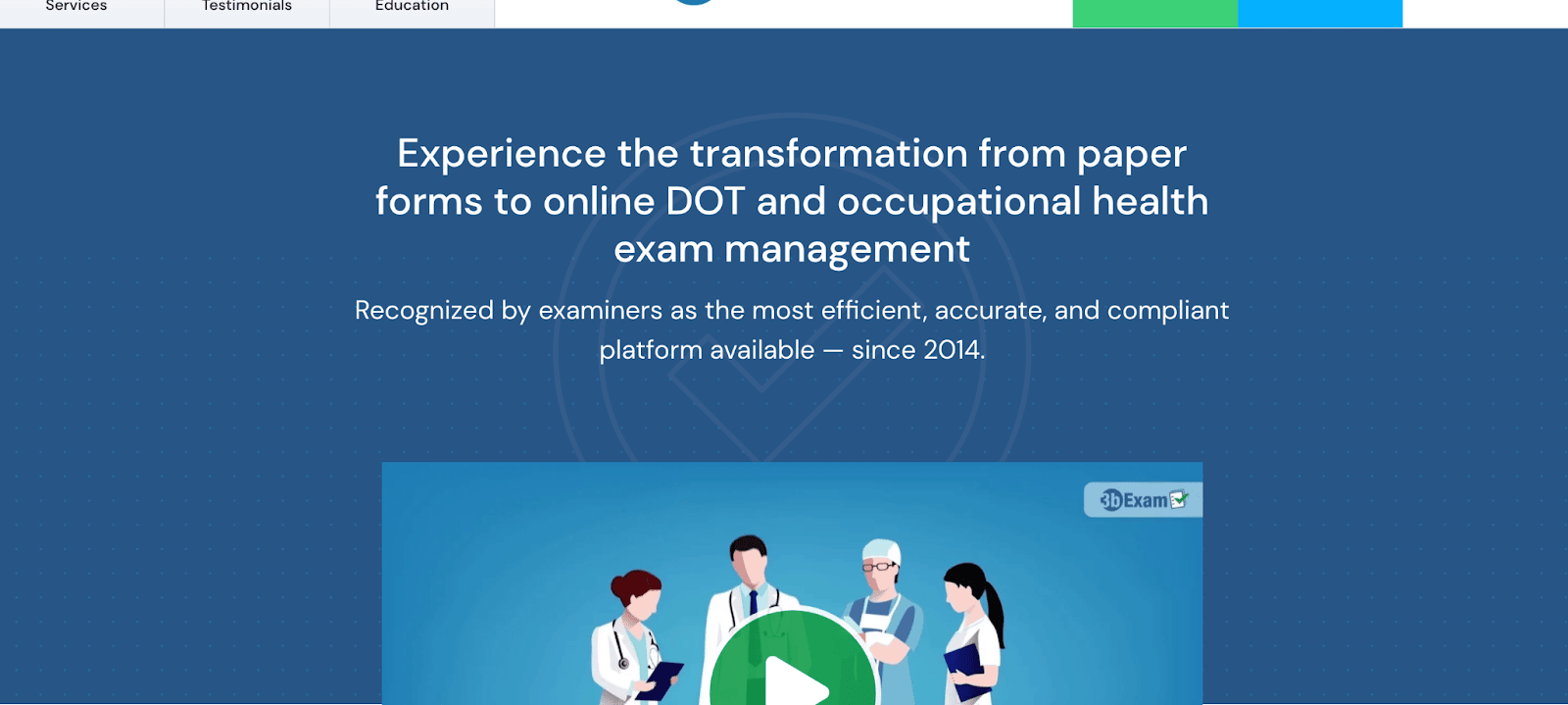
3bExam offers online occupational health tests. Their homepage headline communicates a promise of transformation from doing things the old way to doing things in a newer way while also stating what they offer. The subheadline builds trust with visitors by highlighting the company’s authority and the number of years they’ve been in operation. Their headline message is supported further with an explainer video just below.
Ahrefs ✅

Ahrefs is an online SEO support service provider. Their homepage headline does a good job of succinctly communicating two major benefits their audience can achieve with their solution. Note that they don’t need to tell website visitors that they are an SEO software suite because their niche audience of marketing and SEO professionals will have heard of their software in their professional circles.
Baan Thai Immigration Solutions ✅
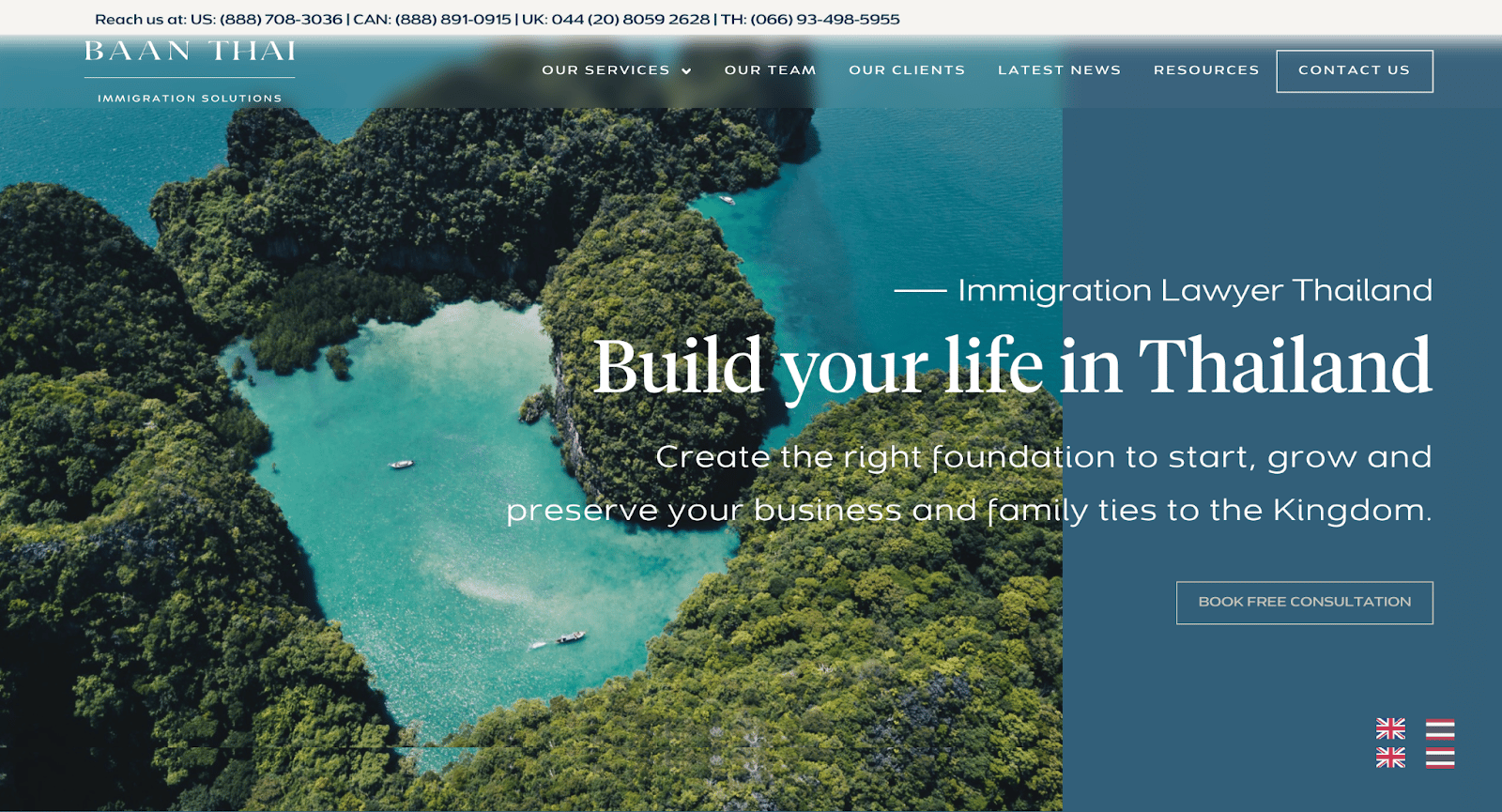
Baan Thai is an immigration law firm providing legal services for expats in Thailand. Their homepage headline utilizes one of the best practices listed above, including the primary keyword in a small-font H1-tagged “eyebrow” headline above the main large-font headline. Here, the keyword phrase is Immigration Lawyer Thailand, but it’s styled so that it’s not the first thing people focus on when they land on the website. Instead, they are drawn to read the headline and subheadline. This way, they get the SEO benefit of having the keyword in their headline but can direct the reader to focus on the benefit they will derive from engaging with this company.
Basecamp ✅

Basecamp provides online project management software. Their homepage headline, subheadline, and call to action pass the “grunt test” with flying colors. Plus, they manage to include the primary keyword phrase, “project management platform,” in their headline.

Another good example of including the primary keyword in the headline, but styling it so that visitors are drawn to focus on the positive outcome they could experience by working with them.
Cliniko ✅
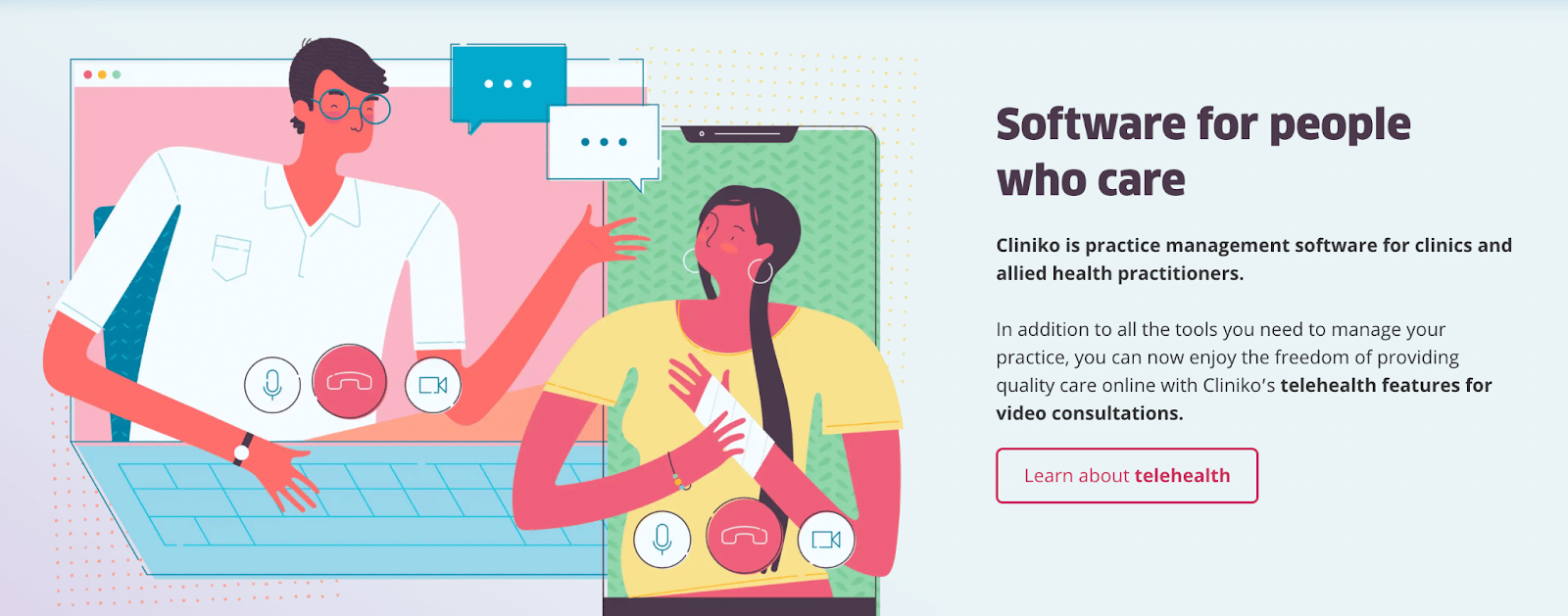
Cliniko makes healthcare-specific software. Their headline and subheadline clearly tell the visitor what they offer, who they help, and highlight their latest telehealth features to demonstrate how they are solving a newer problem for their target audience. Furthermore, the imagery in the header does a good job of reinforcing the message about their new telehealth features, too.

Crazy Egg offers services that help businesses improve the SEO performance of their websites. Their homepage headline spells out the desired outcome that visitors are looking for — that is, improving their website quickly. Their subheadline and call-to-action box includes impressive social proof to back up their claim — “300,000 websites” — and logos of some of the famous companies that use their solution.
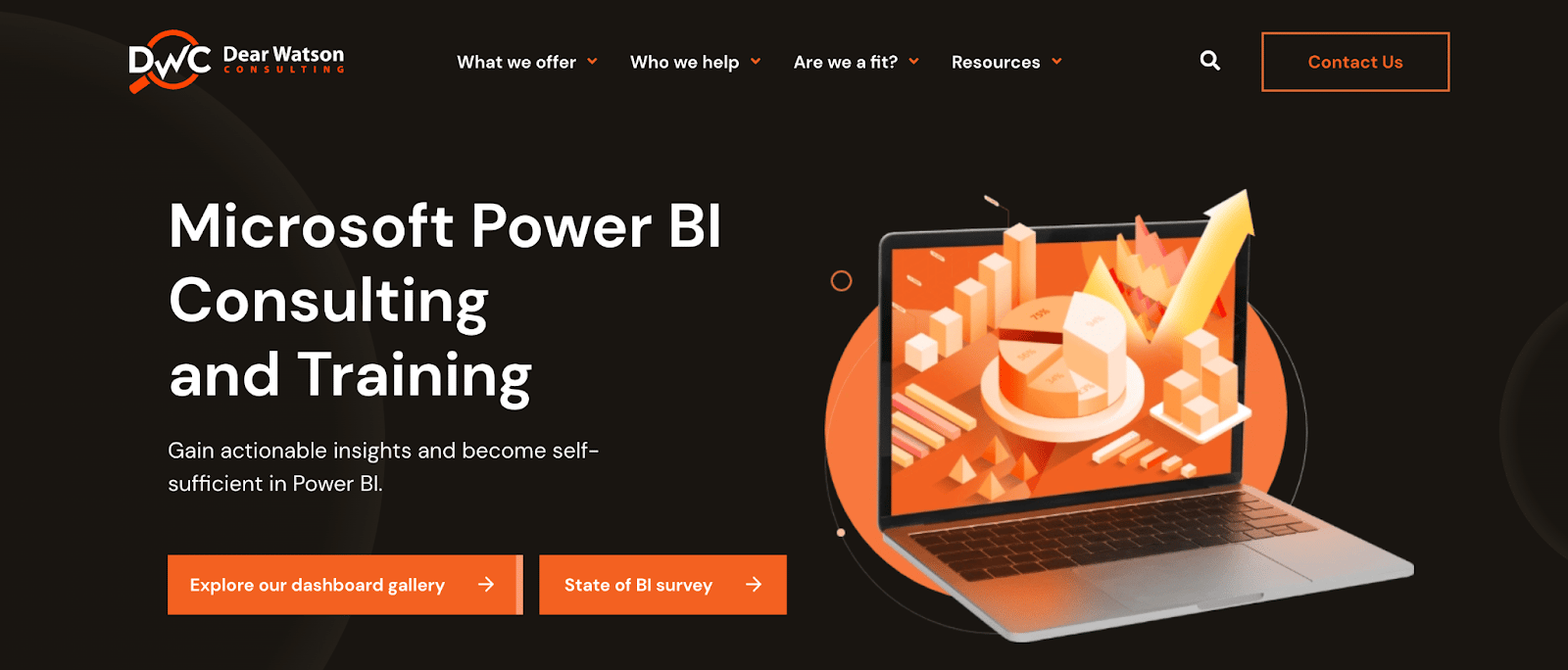
DWC is an IT services provider specializing in Microsoft’s Power BI software. Their homepage headline and subheadline quickly and concisely communicate what they do and the benefit that their audience can derive. The headline is also optimized for a key search term like “power bi consulting.”
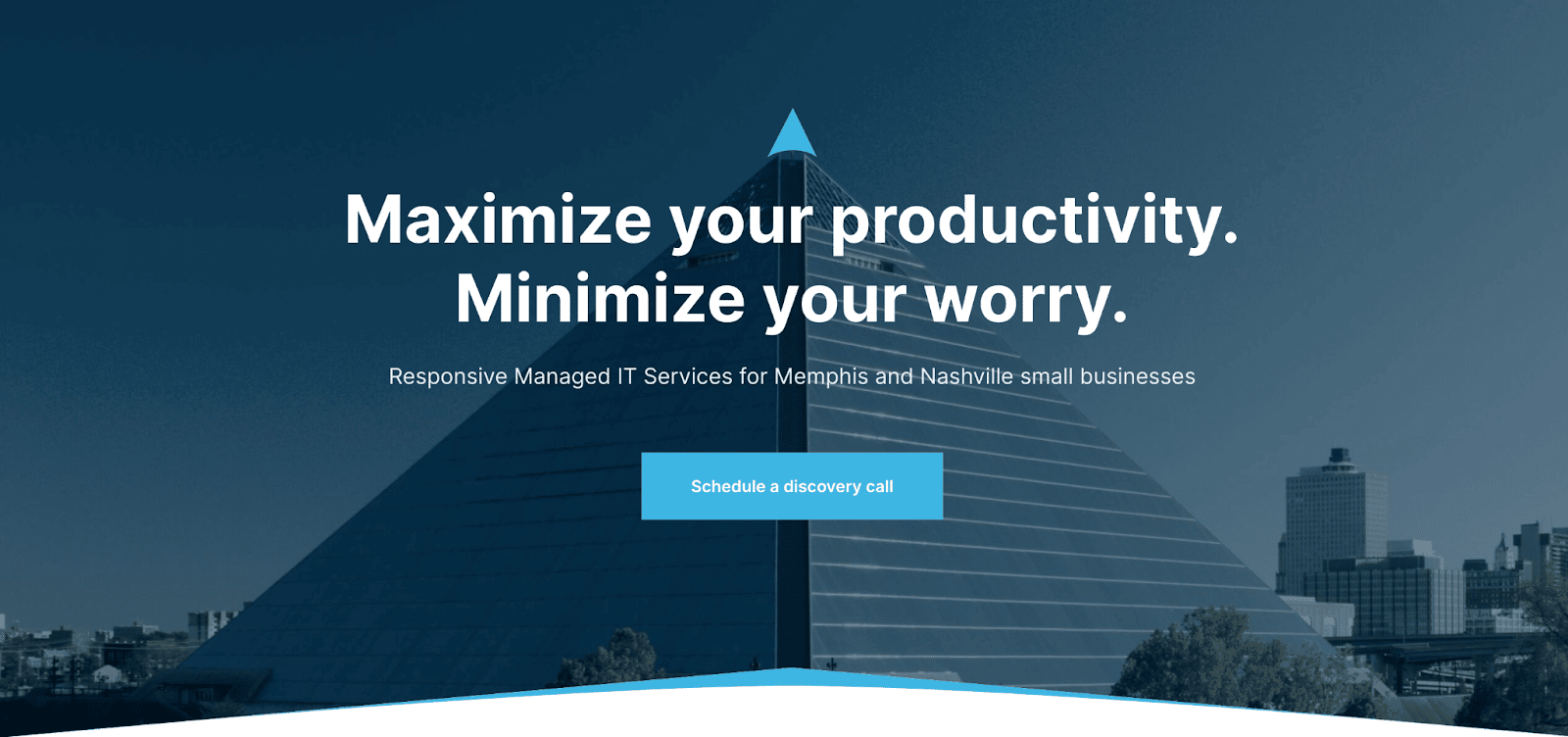
Gant is a B2B IT services provider. They do a good job of emphasizing transformation and benefits in the headline and use the subheadline to highlight what they offer and who it is for.
Milanote ✅
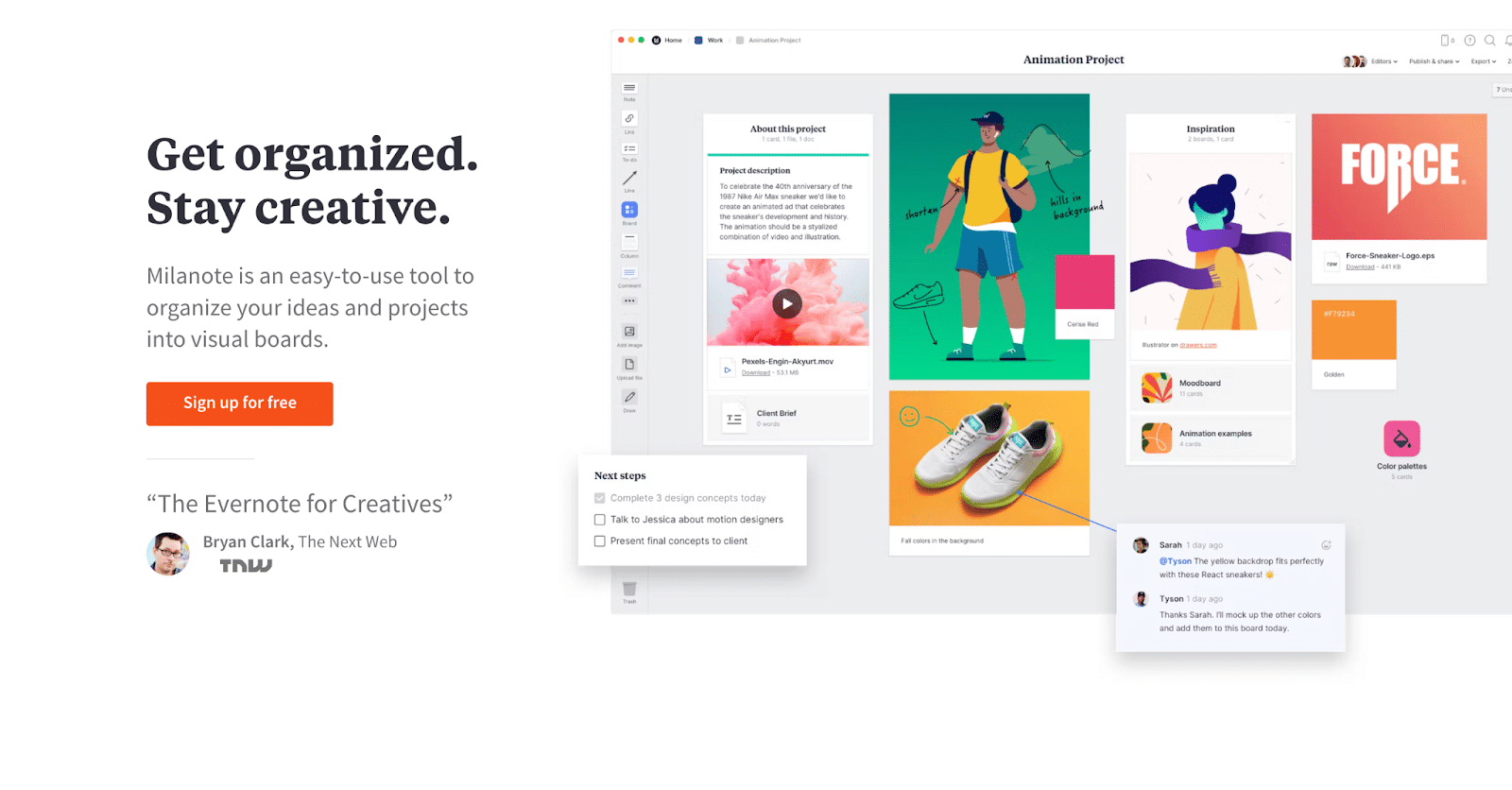
Milanote is an online tool for organizing ideas and projects on visual boards. Their header is a great example of how powerful supporting imagery can be for reinforcing the message in a headline and subheadline. The imagery shows exactly what the headline means by “Get Organized. Stay Creative.”
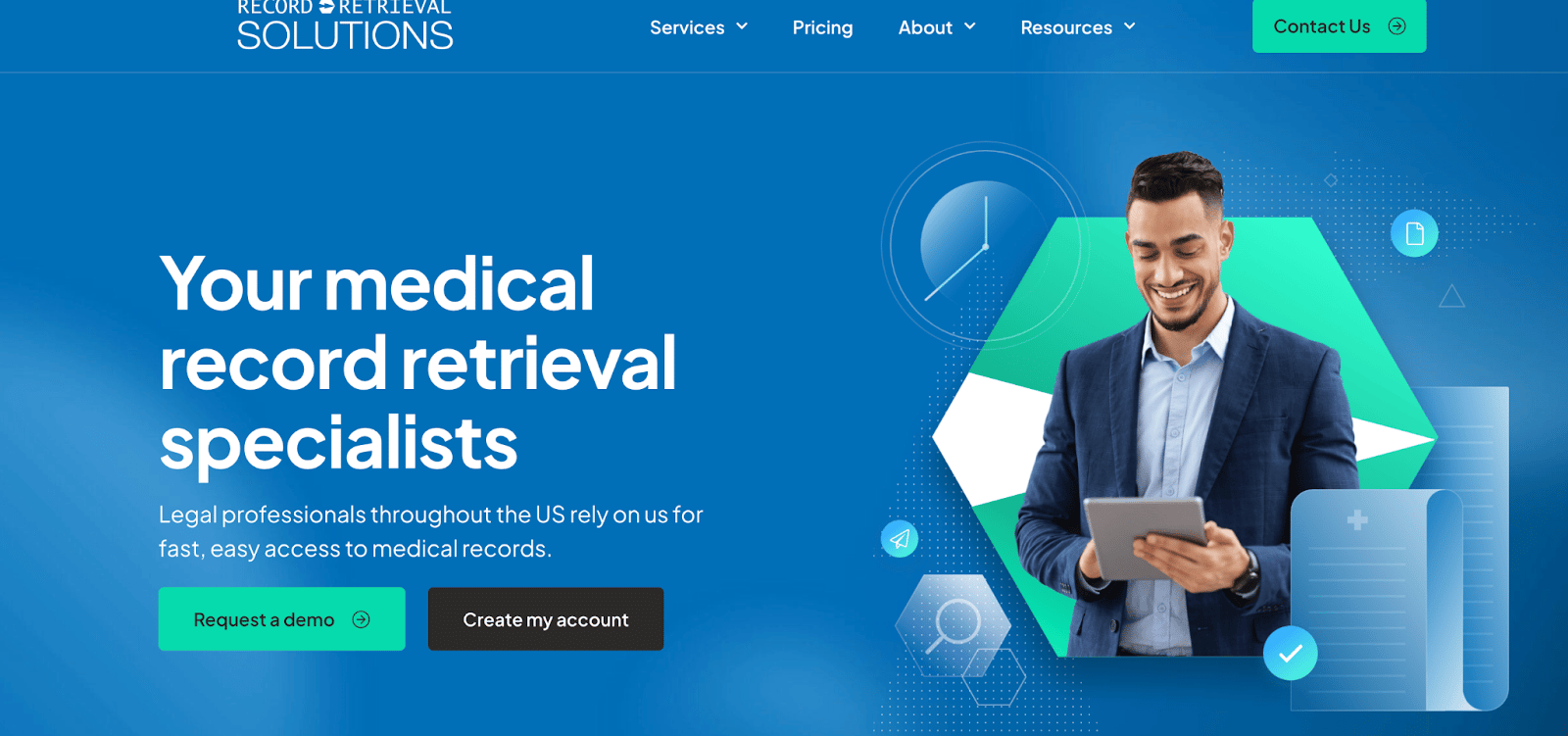
Record Retrieval Solutions provide client medical records to legal professionals for use in court cases. Their target audience will be familiar with their services. Their header demonstrates a good, straightforward example of passing the “gunt test” — the headline and subheadline quickly and concisely tell the audience what they do, who it’s for, and the benefit they can expect.
Homepage headline mistakes to avoid ❌
IT Company ❌

Although this homepage headline has successfully included the keyword “it solutions,” their message is unclear. It does not clarify who the target audience is or what benefit they might derive. They are also missing a call to action, so it’s unclear what website visitors should do next to engage with their business.
Personal Injury Lawyers ❌

It’s great to see images of real people in this website’s homepage header, however, their headline “Our team is committed to you” is a missed opportunity to communicate and engage with the visitor. How are they committed? How do they help? Who do they help? How do they benefit their audience? They have also missed the opportunity of including a key search term in their headline.
Wireless Connectivity ❌

This is another example of an ambiguous and unengaging headline. The headline could be improved by describing who this service or solution is for and how they will benefit.
Data Analytics Consulting ❌

In this last example, you can see that the headline isn’t clear about what this company does and who they serve. Also, they make the mistake of focusing on themselves rather than the reader by including “we” three times in the subheadline. Remember, the audience wants to know what’s in it for them, so speak to them.
Struggling to come up with a good homepage headline?
Experiment with our selection of headline and subheadline templates, curated from a variety of successful websites, to start crafting a more effective homepage headline.
FAQs
What makes a good homepage headline?
A headline should clearly state what your business offers, who it’s for, and how they will benefit. It should make the user feel confident that they are in the right place to find solutions to whatever problem they’re trying to solve.
How long should my headline be?
Ideally, as short as possible while still communicating the three goals above and including your primary keyword. Usually, effective headlines are in the 6–10 word range.
What is a homepage subheadline?
A subheadline (also called subheading) is text that is found under the main headline to give further context or support.
What is a homepage header?
The header is what a visitor sees on their screen when they land on your website homepage before they do any scrolling down. It includes the menu across the top, the headline, subheadline, a call to action, and some kind of background visuals.
What is an H1 tag?
H tags are behind-the-scenes bits of code that determine the hierarchy of headlines within web page copy and communicate this to internet search engines like Google. The H1 tag designates the main headline at the top of a page, and can be important for that page’s SEO performance.
Should SEO keywords be added even if they compromise the language of the headline?
No. The headline is so short and impactful that it should never have errors or awkward wording of any kind. Google’s search AI will ignore ungrammatical or incoherent copy — this means that if your headline has issues, your site won’t be listed near the top of your customers’ search results.
If your keyword doesn’t easily fit into your headline, an option is discussed above in tip #7 and demonstrated in the Baan Thai Immigration Solutions and Broadwing Legal website : Place the keyword in a small-font “eyebrow” headline above the large-font main headline. Then, attach the H1 coding tag to the eyebrow. This way, Google’s search AI will link your H1 tagged eyebrow keyword with people’s search results, and visitors to your homepage will still be able to see the messaging in the large-font main headline.
Conclusion
Your homepage headline is your website’s self-introduction. It needs to appeal to the people visiting your website. It also needs to be short, clear, and easy to read. Professional copywriters will tell you that the shorter a bit of text gets, the harder it sometimes becomes to make “perfect.” If you follow the guidelines above, create a few headline options that you believe in, and test them to see which makes the best introduction, you will have made a major contribution to the conversion rate of your site.
If you’re looking for help creating a strategically guided website or need assistance with your marketing strategy in general, schedule a call directly with a Growth Connect Fractional CMO and see if they can be the missing link in achieving your marketing goals.